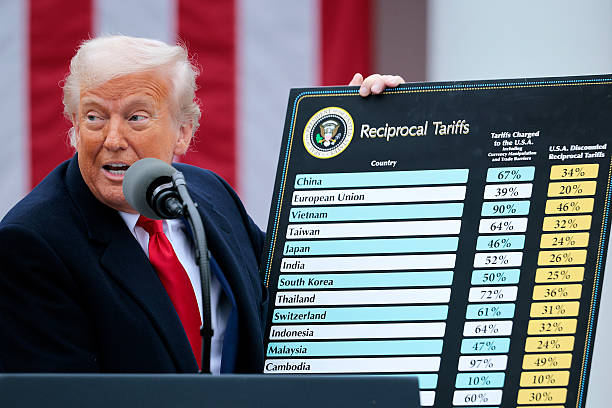
In the wake of President Trump’s recent tariff imposition, the tech industry has now been tasked with readying itself for a steep surge in gadget prices.
Following the imposition of a 20% tariff on Chinese imports in February, the new announcement of a staggering 34% tariff, has culminated into a total of 54% on various products, including everyday gadgets and other electronics. This new tariff policy under the U.S. President Trump’s administration is set to severely affect a wider range of electronic devices — from smartphones and laptops to smart appliances and wearable tech such as over-the-counter hearing aids.
In addition to the tariff placed on Chinese imports, President Trump also announced a 20% tariff imposition on the European Union, 46% on Vietnamese imports, 32% on Taiwanese imports, 25% and 24% on South Korean and Malaysian imports, respectively, as well as a 10% tariff on all other baseline trading counties, thereby declaring what he calls an economic emergency.
These tariffs have targeted a broad range of products, particularly those originating from Chinese markets, which are essential to the functioning and availability of many gadgets in the U.S. market. These tariffs, often described as a trade war strategy by Trump, might significantly affect supply chains, manufacturing costs, and ultimately, bleed into consumer prices.
For instance, Apple. Apple’s flagship products, including the iPhone, much of which are manufactured in China are now susceptible to tariff hikes. As such, the new tariff policy indicates that Apple could raise retail prices, transferring the burden to consumers.
According to a report by Reuters citing projections from Rosenblatt Securities, a high-end iPhone is estimated to cost nearly $2,300 if Apple passes the costs on to consumers as a result of the tariffs. Per the report, the cheapest iPhone 16 model could see a 43% price increase, rising from its launch price $799 to $1,142 in the U.S.
While it is possible for Apple to shoulder some responsibilities, analysts say the most they could take on or absorb ranges between 5%-10%, which means the remaining percentage of the price hike will be passed down to its consumers.
On the day the tariffs were announced, Apple’s shares fell by 9.3%, marking the company’s worst performance since March 2020. The market’s reaction signified an uncertainty that surrounds future profitability and sales, as there might be an increase in production costs due to the tariffs. However, one might not see a change in the prices of Apple’s iPhone until its next release later in the year — the iPhone 17 series.
But the impact of rising gadget prices goes beyond just the flagship products of popular and bigger tech companies. Smaller tech companies, who depend on affordable parts to remain competitive, could find themselves in a tight spot due to the increment in manufacturing costs. In turn, it could lead to a reduction in the diversity of gadgets available in the market, and hurt innovations in the long-run.
Startups and smaller enterprises may either have to absorb these costs, reducing profit margins, or pass them onto consumers, leading to fewer choices and higher prices. This means that the average consumer, simply looking to upgrade their smartphone or buy a new laptop, may encounter a much higher price tag than expected.
As a result of these tariffs-inducing pressure, Apple as well as other tech companies in the U.S. would be tasked with exploring alternative manufacturing locations in the country, and investing in domestic production. They might also have to engage in diplomatic talks with the government for policy changes that could alleviate these pressures.
The backbone of President Trump’s tariff policies lies in the attempt to reshape trade dynamics, particularly with China, who has been a dominant and competitive player in the manufacturing of cutting-edge technologies, as well as a long-time adversary to the U.S.
These tariff policies began as a strategic effort to reduce China’s export stake into the U.S., with President Trump calling it an unfair trade practice, and in turn, wanting to strengthen the U.S. domestic economy and prioritize the interests of Americans. In addition to this recent effort is the blacklisting of over 60 Chinese companies from exporting their product into the U.S., as Trump believes it poses a certain risk to the national security and foreign policies of the U.S.
While the intention behind the tariff policy may be to strengthen domestic production, the unintended consequences are likely to leave lasting effects on the tech industry, affecting prices, and production in a significant way.
Critics of the tariff policy argue that the burden will eventually fall on consumers who are likely to see significant increases in the prices of common gadgets. However, President Trump doesn’t see it that way — he instead sees it as a way for the U.S. to establish its trade hegemony by solidly investing in domestic production.

